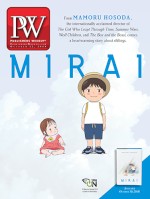For many indie authors, book marketing has become synonymous with social media activity. The effectiveness of marketing a book depends on likes, comments, retweets, and pins—all methods of interacting with content in the online social world.
Although video has exploded as a favorite form for sharing across social networks, a lot of the content that lies behind the links we see on social outlets is still text-based articles from blogs. This is especially true of authoritative information used for problem solving.
Creating Shareable Content
Content isn’t created in a vacuum—there has to be a need for it to exist. Why else write it?
The best way I’ve found to create content that people will really want to share is by thinking from the perspective of the person searching for help. What are an author’s target readers actually looking for?
For writers who know their subject matter deeply, this might involve demonstrating expertise in a way that helps others solve problems. Writers who are newcomers to a field could share what they learn for the benefit of those who will follow in their footsteps. Other writers provide news or entertainment.
There are so many kinds of sites and so many kinds of writers that it can be hard to generalize. But, every day, some content rises above the seething mass of new articles, videos, podcasts, and blog posts. What makes some content so compelling that readers just have to share it?
Fourteen Kinds of Shareable Content
To become irresistible to readers, focus on creating content that is unique, engaging, or useful; solves real problems; uses great headlines; and provokes controversy. Using these criteria, here’s a list of content types that can help writers decide what to write about:
1. Foundation posts: These articles address an author’s history and qualifications to write, as well as basic concepts, terms, and processes in the field he or she is writing about.
2. List posts: The most popular form of blog posts, a list post is just that: a list with a number in the headline, like this one.
3. How-to posts: This basic form of content answers the eternal question, “How do I...?” Both readers and search engines love how-to posts.
4. Definition articles: These are posts dedicated to exploring specific topics and defining them for readers.
5. Technical blueprints: These are a type of how-to article that lays out plans for technical processes.
6. Post series: These combine articles into a series that increases the impact of each post.
7. Opinion pieces: Authors who can back up their opinions with facts will make waves and inspire people who agree with them to share their posts.
8. Resource posts: These are listings of recommended resources for equipment or supplies, tools, software, or hardware.
9. Curated content: These are posts from other sites that enhance an author’s authority within a subject area.
10. Interviews: Authors who don’t have a big platform yet can interview leaders in their fields and publish in audio, video, text, or all three.
11. News announcements: Authors can announce news of any kind about their business or their books.
12. Product reviews: Reviews are relied on by a huge portion of shoppers for clear information and honest evaluation of products.
13. Tutorials: Walking readers step-by-step through a confusing, technical, or complex process can produce content that becomes very popular.
14. News jacks: Authors can turn the news to their advantage by finding angles that connect their expertise to current events.
This list is by no means exhaustive. Some of these types of articles lend themselves well to video or audio production, some less so. But each can be used within an indie author’s marketing strategy.
Producing content that people want to share via social media is one of the most effective ways to amplify an author’s voice and thus find a host of new readers for books—as well as buyers for any related products or services.



 Volume 265
Issue 43
10/22/2018
Volume 265
Issue 43
10/22/2018





